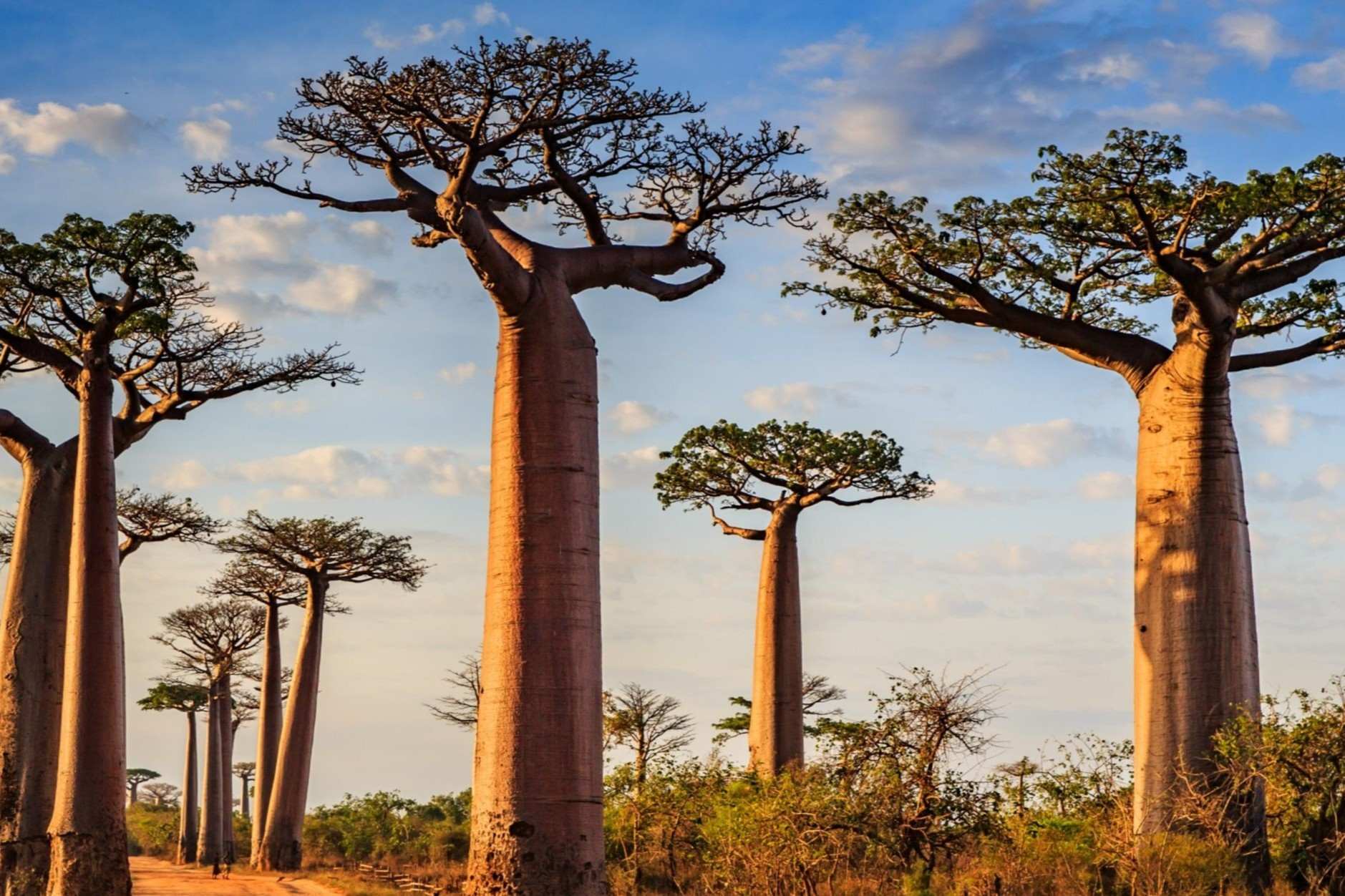
Baobab trees are some of the most fascinating and unique trees on Earth. Found primarily in Madagascar, Africa, and Australia, these giants can live for thousands of years. Their thick trunks store water, making them resilient in arid climates. Often called the "Tree of Life," baobabs provide food, water, and shelter to many animals and humans. Their fruit, known as "monkey bread," is rich in nutrients and has been used in traditional medicine for centuries. Baobabs also play a crucial role in local ecosystems, supporting biodiversity. Curious about these incredible trees? Here are 28 amazing facts about baobabs that will leave you in awe!
The Majestic Baobab Tree
Baobab trees, often called the "Tree of Life," are among the most fascinating and unique trees on Earth. Found primarily in Africa, these trees are known for their enormous trunks and incredible longevity. Let's dive into some captivating facts about these natural wonders.
-
Baobabs can live for over 1,000 years, with some estimated to be around 6,000 years old.
-
The trunk of a baobab can store up to 32,000 gallons of water, helping it survive in arid environments.
-
Baobabs are deciduous, meaning they shed their leaves during the dry season to conserve water.
-
The tree's bark is fire-resistant and can regenerate after being stripped, making it incredibly resilient.
Unique Features of Baobab Trees
Baobabs are not just old and large; they possess unique characteristics that set them apart from other trees. Their appearance and structure have adapted to their environment in remarkable ways.
-
Baobabs have a distinct, swollen trunk that can reach a diameter of 36 feet.
-
The branches of a baobab resemble roots, giving the tree an upside-down appearance when leafless.
-
Baobab flowers are large, white, and bloom at night, attracting nocturnal pollinators like bats.
-
The fruit of the baobab, known as "monkey bread," is rich in vitamin C and antioxidants.
Ecological Importance of Baobabs
Baobabs play a crucial role in their ecosystems, providing food and shelter for various species. Their presence supports biodiversity and helps maintain ecological balance.
-
Baobab trees provide habitats for numerous birds, insects, and small mammals.
-
The hollow trunks of older baobabs often serve as homes for animals, including bats and bees.
-
Baobab leaves are a food source for animals like elephants and antelopes.
-
The fallen fruit is consumed by animals, aiding in seed dispersal.
Cultural Significance of Baobabs
Baobabs hold a special place in the hearts and traditions of many African communities. They are often featured in folklore, art, and daily life.
-
In many African cultures, baobabs are considered sacred and are often sites for community gatherings.
-
The trees are frequently depicted in African art and storytelling, symbolizing strength and resilience.
-
Baobab bark and leaves are used in traditional medicine to treat various ailments.
-
The tree's fibrous bark is used to make ropes, mats, and cloth.
Baobabs in Modern Science and Conservation
Modern science has taken a keen interest in baobabs, studying their unique properties and working to conserve these ancient giants. Efforts are being made to ensure their survival for future generations.
-
Scientists study baobab trees to understand their remarkable water storage capabilities.
-
Baobabs are being researched for their potential in combating climate change due to their carbon storage capacity.
-
Conservationists are working to protect baobabs from threats like climate change and deforestation.
-
Baobab oil, extracted from the seeds, is used in cosmetics for its moisturizing properties.
Baobabs Around the World
While most baobabs are found in Africa, they also grow in other parts of the world. Each region's baobabs have unique characteristics and adaptations.
-
Madagascar is home to six of the nine species of baobabs, each with distinct features.
-
Australia has its own species of baobab, known as the boab, which is smaller but equally fascinating.
-
Baobabs in India are believed to have been introduced by Arab traders centuries ago.
-
The baobabs in Oman are thought to have been brought by African slaves and traders.
Fun and Quirky Facts About Baobabs
Baobabs are not just important ecologically and culturally; they also have some fun and quirky aspects that make them even more interesting.
-
Some baobabs have been used as natural prisons, post offices, and even pubs due to their hollow trunks.
-
The baobab is sometimes called the "upside-down tree" because its branches look like roots.
-
Baobab trees can survive being completely stripped of their bark, which will regrow over time.
-
The baobab's scientific name, Adansonia, honors the French explorer Michel Adanson, who studied the tree in the 18th century.
The Baobab's Mystique
Baobabs aren't just trees; they're legends. These giants, with their massive trunks and unique silhouettes, have fascinated people for centuries. They store water, provide food, and even offer shelter. Their bark can be used for making rope and cloth, while their fruit is packed with nutrients. Some baobabs are thousands of years old, making them living witnesses to history.
Their resilience in harsh climates showcases nature's adaptability. Baobabs also play a crucial role in local ecosystems, supporting various wildlife. Despite their strength, they face threats from climate change and human activities. Protecting these natural wonders is essential for preserving biodiversity and cultural heritage.
Next time you see a baobab, remember its incredible story. These trees are more than just plants; they're symbols of endurance, history, and the intricate balance of our environment.
Was this page helpful?
Our commitment to delivering trustworthy and engaging content is at the heart of what we do. Each fact on our site is contributed by real users like you, bringing a wealth of diverse insights and information. To ensure the highest standards of accuracy and reliability, our dedicated editors meticulously review each submission. This process guarantees that the facts we share are not only fascinating but also credible. Trust in our commitment to quality and authenticity as you explore and learn with us.
